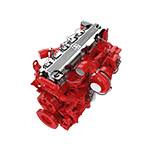Dec . 12, 2024 10:11 Back to list
minimum brake drum thickness
Understanding Minimum Brake Drum Thickness Importance and Maintenance
Brake drums are crucial components of a vehicle's braking system, particularly in older vehicle models and certain types of heavy-duty vehicles. They play a significant role in the overall safety and performance of the vehicle. One essential aspect of brake drum maintenance is understanding the minimum brake drum thickness, which ensures that the brakes function effectively and safely. In this article, we will explore the significance of minimum brake drum thickness, how it is measured, and what factors can influence the thickness over time.
What is Brake Drum Thickness?
The brake drum is a cylindrical component that works in conjunction with brake shoes to create friction, thereby slowing down or stopping the vehicle. As friction occurs during braking, the brake drum experiences wear over time. The thickness of the drum is vital; if the drum becomes too thin, it may not dissipate heat effectively or could lead to brake failure. Thus, manufacturers specify a minimum thickness, below which the brake drum should not be used.
Importance of Minimum Brake Drum Thickness
1. Safety The most critical reason for adhering to the minimum brake drum thickness is safety. A worn drum can lead to reduced braking performance, increased stopping distances, and potentially catastrophic brake failure. By regularly checking and replacing drums that have worn below the specified thickness, drivers can help ensure their safety and that of others on the road.
2. Effective Heat Dissipation During braking, heat is generated as the brake shoes press against the drum. A thicker drum can better absorb and dissipate this heat, preventing overheating, which can lead to brake fade—a phenomenon where the brakes become less effective due to excessive heat. Maintaining the correct drum thickness is crucial for maintaining the efficacy of the braking system.
3. Longer Lifespan of Brake Components A properly maintained brake drum will help extend the lifespan of related components, such as brake shoes and wheel cylinders. When a drum is too thin, it may create uneven wear on the brake shoes, leading to premature failure of other brake parts and more frequent repairs.
Measuring Brake Drum Thickness
minimum brake drum thickness

To determine if a brake drum has reached its minimum thickness, a mechanic will utilize a micrometer or caliper to measure its thickness at various points along the drum's surface. The results are then compared with the manufacturer’s specifications, which can typically be found in the vehicle's service manual. If the measurements fall below the minimum thickness, the drum should be replaced immediately to avoid safety hazards.
Factors Affecting Brake Drum Thickness
Several factors can influence the rate of wear and the overall thickness of brake drums
1. Driving Habits Aggressive driving, such as heavy braking, frequent stop-and-go traffic, or towing heavy loads, can contribute to quicker wear of the brake drums.
2. Quality of Brake Components The type and quality of brake shoes used in conjunction with the drums can also affect wear patterns. Lower-quality materials may lead to excessive abrasion on the drum surfaces.
3. Environmental Conditions Exposure to harsh conditions, such as rain, snow, or road salt, can accelerate wear on brake components, including drums.
4. Regular Maintenance Regular inspections and maintenance are crucial for extending the lifespan of brake drums. Mechanic recommendations often suggest checking the thickness of brake drums at regular service intervals.
Conclusion
Understanding the minimum brake drum thickness is an essential aspect of vehicle maintenance that significantly impacts safety on the road. Through regular inspections and adherence to manufacturer specifications, vehicle owners can ensure that their braking systems perform optimally. Whether you are a vehicle owner or a fleet manager, prioritizing brake drum maintenance can lead to safer driving experiences and reduce long-term repair costs, ensuring that your vehicle remains reliable on the road for years to come.
-
Durable Brake Drum MAZ for Heavy Duty Trucks | High Performance
NewsAug.26,2025
-
FUWA: Premium Quality, Reliable Performance & Innovative Solutions
NewsAug.25,2025
-
Liza Brake Drum: Superior Quality & Performance for Safe Driving
NewsAug.24,2025
-
Iveco Brake Drum | Premium OE Quality for Daily & Eurocargo
NewsAug.22,2025
-
Your Brake Drum Man: Quality & Performance Parts
NewsAug.21,2025
-
Explore Japan: Ultimate Travel Guide & Authentic Experiences
NewsAug.19,2025
